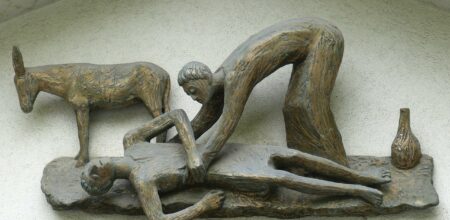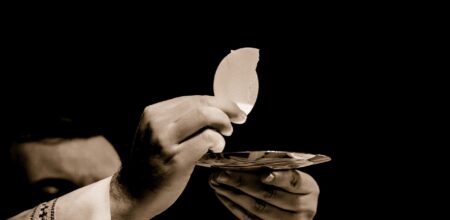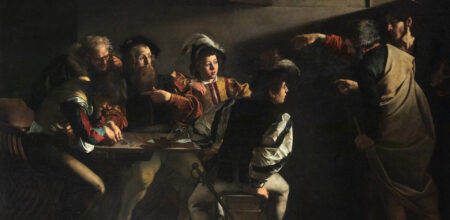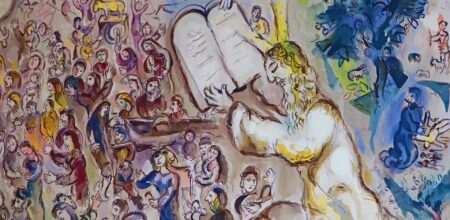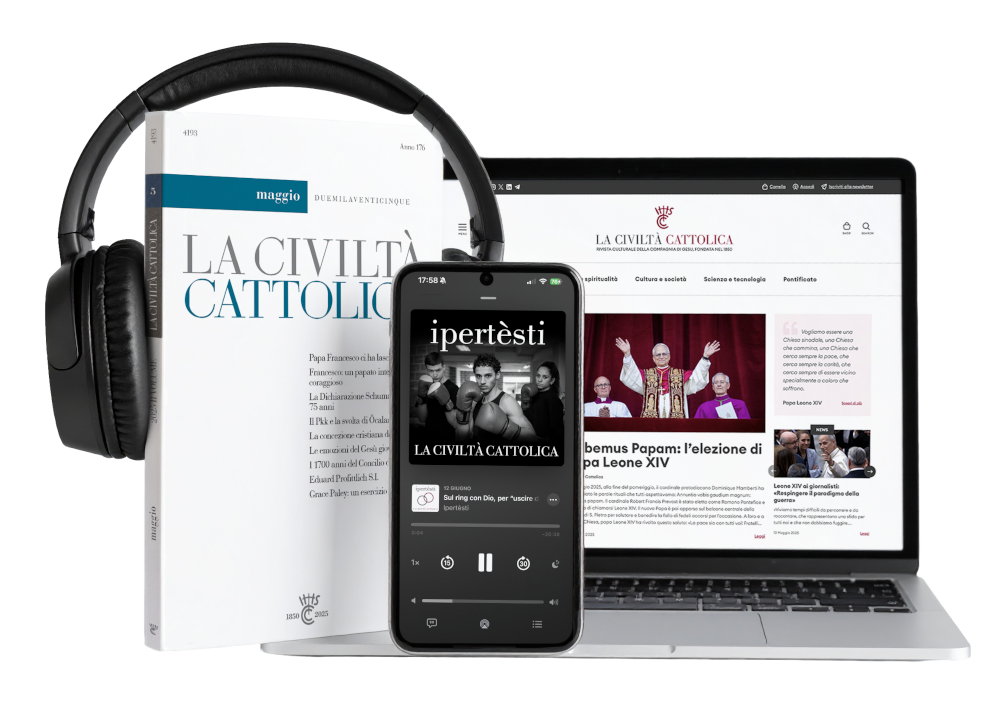(by Francesco Sisci – Source: Settimana News)
Many recent articles in the American press viewed the essay in Civiltà Cattolica by Father Antonio Spadaro and Rev. Marcelo Figueroa as if the Church were taking a left-wing position on the American political debate, and hence as an expression of what some have long suspected: the Pope, close to the two authors, is intervening in the American political debate on behalf of one side, the left, against the other, the right.
Such a partisan reading, however, is far from the intentions of the authors, the Pope, and the Church. The Church, as this Pope reiterated on a number of occasions, is a religious and non-political institution. The Church’s political doctrine is to give a positive impetus to society and politics, not to stand for or against particular rulers, as was also underscored in another essay published in Civiltà Cattolica by Father José Luis Narvaja.
In this sense, however paradoxical, the position of the Church is very similar to what President Hu Jintao put forward in a speech at the 2007 Congress of the Chinese Communist Party. Religions and religious personalities can give a positive impetus to politics, understood as the life of the community, the Polis, as Narvaja defined it in his essay. But, as Narvaja points out, they do not take part, and they do not become a party.
The division into parts, becoming parties, in political debate is essential, and parties are vital elements in the Polis‘s life. It is right for the citizens to separate themselves and take positions, and these divisions are vital because they advance the Polis‘s debate, and through debate, its unity. It is this level of unity and common good of the Polis that moves the Church.
The “sin” against which the Church fights and has to fight, according to the essay by Spadaro and Figueroa, is not to favor one party over another for its moral or political principles, but the split, the demonization of one side by another. That is, when in the political debate one side goes as far as delegitimizing the opponent by refusing him citizenship and even existence, it is as if they were condemning the adversary to hell. But in doing this, the party that demonizes the adversary actually condemns itself to hell. When one party wants to take over everything, crushing and destroying the other, it destroys social cohabitation, the opinions of others, and the vivifying power of debate between different ideas.
This is then the root of the Church’s condemnation of Marxism, not its analysis of the economy or society. When Karl Marx attacks religions as the “opium of the people,” he sees with precision how the Church’s power is to mediate between various social orders and reject the revolutionary impulses that swept the world during the time of the great revolutions from the French 1798 to the Russian in 1917. These revolutions sought to impose the will and the needs of one faction, a party or a class (whether it be the bourgeoisie or proletariat), over the will and needs of other factions or social classes. Marx, a revolutionary aspirant, needed to eliminate the Church’s mediation in order to mobilize the masses to solve the problem of class struggle by physically eliminating a social class and overthrowing the government in power.
This reading of the social-political debate came to Marx from Giambattista Vico (1668-1744), who in The New Science for the first time identified the asperity of the war between classes, perhaps in light of Oliver Cromwell’s 1648 English Revolution, the first revolution of the West. It is peculiar that the idea of revolution (ge ming, change of the Mandate of Heaven), an ancient and foundational concept of Chinese history, came to the West precisely in the decades preceding the Cromwell Revolution, thanks to the translation work of Chinese classics by the Jesuits. Moreover, in 1644, the rebel Li Zicheng had overthrown the Ming Dynasty, and hence opened the door to the Manchu invasion and the establishment of the Qing Dynasty.
While Vico reminds that “good Menenius Agrippa reduced the Roman plebeian to obedience,” he also explains that religion is able to mediate and placate the less educated and less skilled classes to create social harmony and peace. This class peace is the main obstacle to Marx’s revolution, which instead wants to replace and eliminate rulers with the ruled, the bourgeoisie with the proletarians, as Robespierre wanted to replace the aristocrats with the bourgeoisie.
Of course, this was especially true in a historic moment of strong social conflicts, as in the 19th and in part of the 20thcentury. At a time when the middle class fully emerges and becomes central, as after the 1950s in the West, the dynamics and dialectic between the parts (and parties) changes.
In this sense today the “sin” of the theocons is that they want to split society: they are partial and want to impose their partiality on the whole, possibly by force, by demonizing the other, as Spadaro and Figueroa explain. But on the other hand, Spadaro and Figueroa also understand that the theocons, as a part, must also be understood within the whole. That is, one cannot think of eliminating more or less violently the theocons as they want to eliminate the others. What they say is a part of the truth, which may not be the whole truth but as a part it must be understood and accepted, not refused and marginalized. This is coherent and consistent with the Church’s social doctrine in that it has opposed revolutionary movements since their emergence, but has also consistently sought to understand and integrate the motives of revolutionaries into the social body.
That is, in almost trifling terms, the Church has sought to turn revolutionary drives into impulses toward social evolution. Moreover, the plebeians sent home by Menenius Agrippa renounced the revolution but gained greater participation in the political life of the Roman Res Publica, which ceased to be only a thing of the patricians. So the Church talks “left” now because certain social pushes are part of the whole and should not be demonized.
But it remembers well that some of the Western “left” attacked the Church on the issue of sexual abuse of children by making a subtle and fallacious logical leap. The Catholic Church, fifteen years ago, was under attack by the “liberal” establishment of the West for sexual abuse. The question was certainly real and very serious. But it was also used specifically to indirectly claim that rot comes from within the very organization of the Church, where bishops and cardinals, on up (implicitly) to the Pope, would cover up sexual abuse of children.
That is, the argument was that the sexual abuse committed by a priest occurred thanks to a smokescreen by the Church, ergo evil is within the very Church that with its organization covers up the evil. The accusation was very serious and implied a logical leap. If some provide cover and if the organization is also used to cover up abuse, this does not imply an intrinsic evil in the organization; it only implies that the organization can be used badly. After all, a state that makes mistakes of any kind should not be overthrown as such with a revolution, it has to be reformed and changed, but not violently overthrown and replaced with something else. All Western countries that make mistakes one after another would otherwise be always at risk of revolution. The state, if it is open and flexible to change, can and must be corrected without the dramatic and bloody events of a revolution.
So the state has to find a way to save itself (as a state) and all its parts, by changing and evolving. The logical jump was and is subtle, and so many may neglect to see it, whether on purpose or because of distraction. But this kind of response is crucial for the very lives of modern societies that from Cromwell onward are actually structured to be elastic enough to avoid fundamental crises leading to revolutionary events. The state making mistakes must be saved from catastrophic revolutions, and the responsible must be charged.
Still, historically, in the context of the “liberal” attack on the organization of the Church, many Catholics found the solidarity with the most conservative of the Christian world. The conservatives saw it as violent criticism of the values of the church and as disparagement of the traditional values of the Western world. In this particular context, the Evangelical-Catholic alliance grew, bound if not by faith then by “politics” against the a-religious arguments of the “liberal” anti-Catholics.
In sum, the Church travels in the West between Scylla and Charybdis. On the one hand, there is the hairy embrace of the theocons, who use religion to bless their own political theses; on the other hand, there is the “liberal” hazard, where some aim to sink the Church by aiming at its coffers. The threat of raising the limit on the statute of limitations for the criminal prosecution of abuse of children could open up a cascade of suits against the Church, with compensation requirements that could bankrupt the Church.
That is, both the “right” and “left” “sin” when they want to turn into absolute their political position at the expense of the other and demonize the opponent. Theocons, who believe they can solve the complex problems of the world by starting wars right and left, “sin”; as do the “liberals” who demonize and refuse to engage the theocons, as if they were a foreign body and not about half of some societies and with important issues that must be taken into account and addressed. In the middle then, pulled on one side and the other, is the middle class. It tends to become smaller by the day in this time of great economic and international upheaval, and it may therefore be pushed to increasingly extreme behaviors, having less to lose with a major social disruption.
But in this journey that is perilous in practice, at least in principle there are no difficulties: the Church wants the unity of all; it does not want exclusions, demonization, or to send to hell any part, whatever it is. In theological terms, conversely, anyone trying to bring division is diabolical, from the Greek διαβάλλω, divide through slander, “fake news” as we would say today.
This is not just theory but has clear practical consequences and in international politics leads to the delicate and very important mission of Secretary of State Cardinal Pietro Parolin to Moscow in August.
There are three issues in his agenda. There is the reconciliation of the Church of Rome with that of Moscow, of which President Vladimir Putin, almost heir of the old czars, is patron. There is the war in Syria, where Moscow is engaged with Tehran to support Assad’s Shiite government against Sunni insurgents, and where the Christian minority is attacked by all. Then there is the issue of Ukraine, split between a Catholic half, the Uniates, and a Russian Orthodox half. On all these fronts, Rome does not aim to assert one principle against another: the Uniates against the Orthodox, Christians against Sunnis or Shiites, or the religious primacy of the Vatican on Moscow. Instead, Parolin will seek ways to recompose everything, to find a way for peace and coexistence that recognizes the needs of the various parts.
In this the Church does not have, does not want, and must not have a part to defend—it wants overall development. It does not want new Yaltas, where the world is sliced like a cake more or less peacefully between two or three winners. It wants the world’s cake to remain whole and for all to enjoy it.
In practice, this means finding wise and clever solutions, and here the Church can contribute because it has no one part to defend, but defends the whole world and the peace of the world. In this it is against wars and revolutions, which are attempts to solve with blood what cannot be solved with high politics.
Of course it would be ideal if this effort for high politics and broad vision were to start with the primary power of the world, the United States. The USA however appears today divided into parties that seem to demonize each other and break the country and the world. The article by Spadaro and Figueroa is then a cry of grief for the debate in America and a kneeling prayer for the return to unity of the country, because without this unity of intent in America, peace and stability in the world is also in danger.
This space of unity and harmony brought about by religion was an important topic at the 2007 Chinese Party Congress. When Pan Yue wrote in essence that the state needed religion as the “opium of the people,” he actually brought the thinking back to Vico’s mediation model.
This therefore opens up a bigger issue for China, the largest emergent country impacting the world and the US.
The historical imperial Chinese political model was of absolute and total power that imposed social peace from above, relying on potential intense pressure instead of negotiating and reaching it through a process of dialogue. This model has subjected China to cyclical crises of revolution and restoration. The model was imported into the West with the French Revolution, probably inspired by Jesuit translations, as we have seen, since many thinkers of the Enlightenment, starting with Voltaire, considered China an inspiration at the time.
This model is objectively in a practical crisis and the crisis is also in theory. Indeed, the Revolution-Restoration Model says that if not tomorrow, then maybe in one hundred or two hundred years, the current “communist dynasty” will be swept away. Only an “evolutionist” model opens more room for the solidity of the Chinese government, spaces that serve the peace of the country and the world, and that would allow the Chinese government to think without the constant shadow of a coming revolution.








